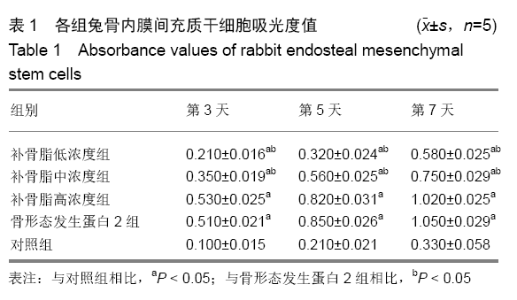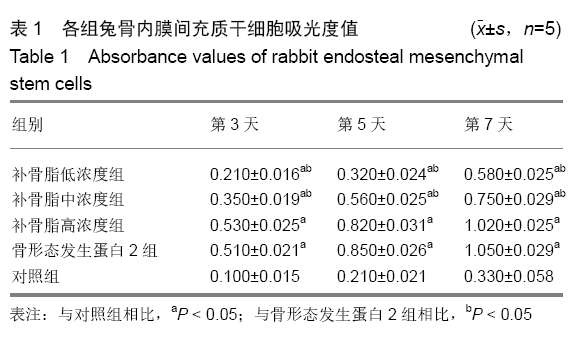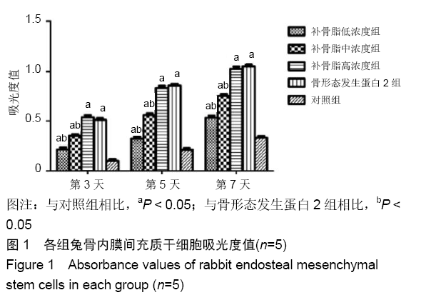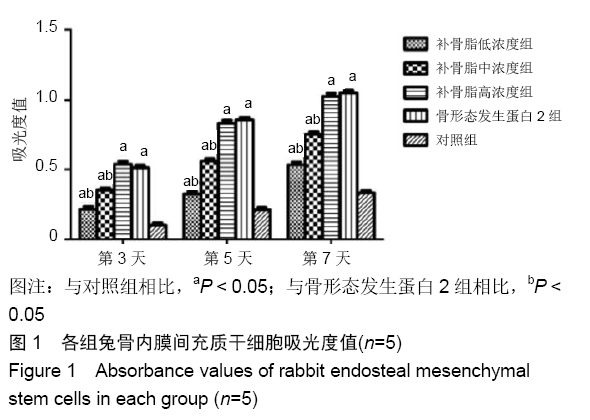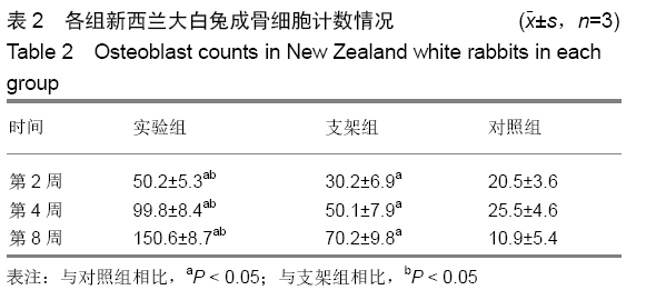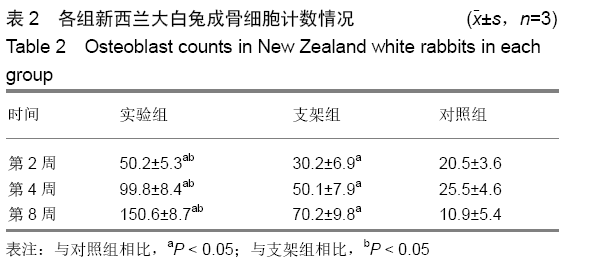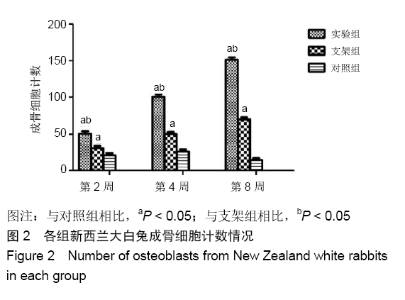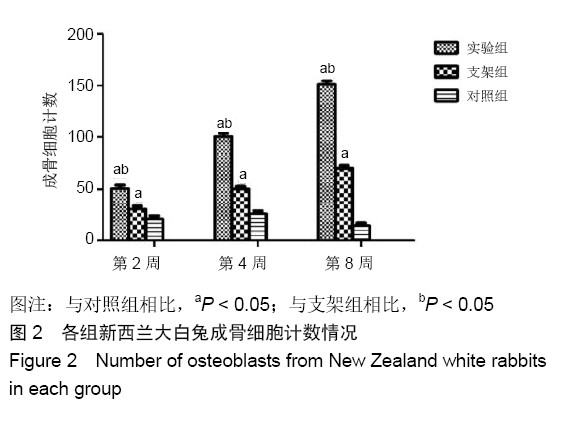[1] 霍力为,王广伟,黄红,等.补骨脂素对酒精诱导的成骨细胞增殖的影响[J].广州中医药大学学报, 2017,34(4):555-559.
[2] LI R, CHEN KL, WANG Y, et al. Establishment of a 3D printing system for bone tissue engineering scaffold fabrication and the evaluation of its controllability over macro and micro structure precision. Beijing Da Xue Xue Bao Yi Xue Ban. 2019;51(1):115-119.
[3] 陈苏平,李平. ESW对兔成骨细胞增殖影响的实验研究[J].当代医学, 2012,18(4):150-152.
[4] HUANG K, WU G, ZOU J, et al. Combination therapy with BMP-2 and psoralen enhances fracture healing in ovariectomized mice. Exp Ther Med. 2018;16(3):1655-1662.
[5] ZHANG T, HAN W, ZHAO K, et al. Psoralen accelerates bone fracture healing by activating both osteoclasts and osteoblasts. FASEB J. 2019;33(4):5399-5410.
[6] LIN J, ZHU J, WANG Y, et al. Chinese single herbs and active ingredients for postmenopausal osteoporosis: From preclinical evidence to action mechanism. Biosci Trends. 2017;11(5):496-506.
[7] AN J, YANG H, ZHANG Q, et al. Natural products for treatment of osteoporosis: The effects and mechanisms on promoting osteoblast-mediated bone formation. Life Sci. 2016;147:46-58.
[8] YUAN X, BI Y, YAN Z, et al. Psoralen and Isopsoralen Ameliorate Sex Hormone Deficiency-Induced Osteoporosis in Female and Male Mice. Biomed Res Int. 2016;2016:6869452.
[9] 黄奎,伍国锋,邹季.补骨脂素对骨质疏松小鼠骨折修复的影响[J].生物骨科材料与临床研究, 2018,15(5):1-4.
[10] 杨伊姝,刘占东,张树成,等.补骨脂素抗抑郁作用及机制研究[J].神经疾病与精神卫生,2018,18(5):308-311.
[11] 邢贞武.补骨脂素对绝经后骨质疏松患者骨髓间充质干细胞Notch信号通路的影响[J].中医学报,2017,32(11):2181-2184.
[12] 李少鹏,蔡建通,翁铭芳,等.补骨脂素对前列腺癌LNCaP-AI细胞增殖和周期调控及雌激素受体β表达的影响[J].中华细胞与干细胞杂志(电子版), 2018,8(1):1-5.
[13] 霍力为,王广伟,黄红,等.补骨脂素对酒精诱导的成骨细胞增殖的影响[J].广州中医药大学学报,2017,34(4):555-559.
[14] CHEN S, WANG Y, YANG Y, et al. Psoralen Inhibited Apoptosis of Osteoporotic Osteoblasts by Modulating IRE1-ASK1-JNK Pathway. Biomed Res Int. 2017;2017:3524307.
[15] LI F, LI Q, HUANG X, et al. Psoralen stimulates osteoblast proliferation through the activation of nuclear factor-κB-mitogen- activated protein kinase signaling. Exp Ther Med. 2017;14(3): 2385-2391.
[16] MALININ GI, VORNBERGER WJ, HORNICEK FJ, et al. Effects of psoralen on the structural integrity of cultured osteoblasts. Phase contrast, immunofluorescent, and electronmicroscopic evaluation. Arch Toxicol. 1996;70(3-4):182-188.
[17] TANG DZ, YANG F, YANG Z, et al. Psoralen stimulates osteoblast differentiation through activation of BMP signaling. Biochem Biophys Res Commun. 2011;405(2):256-261.
[18] 廖世波,赖琛,张志雄,等.骨修复复合材料及其相关问题的研究进展[J].中国生物医学工程学报, 2012,31(5):755-761.
[19] 于斌,申长虹.骨组织工程材料的研究进展[J].医学综述, 2006,12(11): 643-645.
[20] SODUPE ORTEGA E, SANZ-GARCIA A, PERNIA-ESPINOZA A, et al. Efficient Fabrication of Polycaprolactone Scaffolds for Printing Hybrid Tissue-Engineered Constructs. Materials (Basel). 2019;12(4): E613.
[21] LINDHOLM RV, LINDHOLM TS. Mast cells in endosteal and periosteal bone repair. A quantitative study on callus tissue of healing fractures in rabbits. Acta Orthop Scand.1970;41(2): 129-133.
[22] PAZZAGLIA UE, CONGIU T, SIBILIA V, et al. Osteoblast-osteocyte transformation. A SEM densitometric analysis of endosteal apposition in rabbit femur. J Anat. 2014;224(2):132-141.
[23] YEE JA. Properties of osteoblast-like cells isolated from the cortical endosteal bone surface of adult rabbits. Calcif Tissue Int. 1983;35(4-5): 571-577.
[24] 陈书尚,翁铭芳,王水良,等.补骨脂素对前列腺癌LNCap-AD细胞增殖的影响及其分子机制研究[J].中华细胞与干细胞杂志(电子版), 2017, 7(4):219-223.
[25] 章文娟,谢保平,李伟娟,等.补骨脂素抑制破骨细胞形成及其机制的实验研究[J].第三军医大学学报, 2017,39(7):641-645.
[26] 殷杰,邱素均,高浚淮,等. FGF-2/PELA/BMP-2微囊支架促进大鼠骨膜来源干细胞的成骨分化[J].南方医科大学学报,2017, 37(7):641-645.
[27] 应志敏. PDGF-bb联合BMP-2生长因子对骨膜来源干细胞在二维培养和可注射水凝胶GelatiN-Hpa中增殖及成骨分化能力的影响研究[D].杭州:浙江大学,2015.
[28] 李启活.补骨脂素激活MAPK-NF-κB信号通路促进成骨细胞增殖的研究[D].广州:广州中医药大学, 2016.
[29] 张可丽.中药植物雌激素对人晶状体上皮细胞雌激素受体表达的影响及其信号转导机制的研究[D].福州:福建中医药大学;福建中医学院, 2009. |
